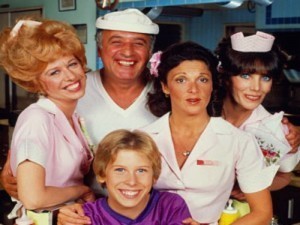Harold Bloom Was Really Talking about Alice

All literary criticism should reference ALICE. (photo: snipview.com)
In college, I had to read a scholarly work called The Anxiety of Influence by Harold Bloom. The gist of it was this: poets need to read other poets, but how do you make sure that you don’t wind up sounding like them and thus lose your own voice? I always thought Bloom’s argument was spot on, probably because all through college and my early twenties, I was doing some very bad JD Salinger writer-karaoke. Shortly thereafter, I immersed myself in so much Faulkner that I could barely carry on a normal conversation without sounding like I’d just ridden into town from Yoknapatawpha County.
The best writers have these amazing voices that beg to take up lodging in your brain. There’s so much you can learn from them, but if you’re not careful, your work becomes derivative. Ezra Pound told TS Eliot when Pound was editing The Waste Land–the actual intention of which was to reference other works of art, “Pope has done this so well that you cannot do it better….you cannot parody Pope unless you can write better verse than Pope–and you can’t.” Ouch! If that doesn’t give you pause as a writer, what will? I mean, if someone as beyond brilliant as Eliot gets smacked down for being a pale shadow of another writer, what chance do the rest of us have?
Problem is, we can’t really write in a vacuum. Every writer has influences, and the more of them you have, the richer your voice will ultimately become. But it’s hard to come up with something truly original when you’ve seen it all. Once in a poetry workshop I took, a student read a narrative poem, only to have a classmate remark, “I think I saw this once on Alice.” The professor’s insightful reply? “That’s the problem. We’ve seen everything before…on Alice.” It’s stuck with me all these years because he was so right. And I’m especially jaded because back in the days before DVR, Alice was what was on TV when we got home after school, and my brother and I watched every episode at least twice. I have, indeed, seen it all on Alice. (I should point out here that Harold Bloom wrote his book a few years before Alice premiered. Otherwise, he probably would have made the same comment as my professor.)
Because I’m so jaded, if a new book reminds me of an older book, I sometimes automatically assume it will derivative of the first one. For example, when I heard about Maya Van Wagenen’s bestseller Popular: Vintage Wisdom for a Modern Geek, my first thought was, “Oh, some savvy editor decided to take the premise of Meg Cabot’s How to Be Popular and get some teenager to stunt journalism it.” Nevertheless, I had to read it because how could I not? It’s a great premise, even if I’d seen it before in fiction.
I admit I didn’t have high expectations for the book. I expected it to be cutesy and fun…and it was fun. But the author went beyond that. She took something I’d seen before and made it her own. Not just because it was nonfiction instead of fiction, but because the book was so personal and honest. Not everything in the book was about the popularity experiment. When she wrote of her favorite teacher dying of cancer, the lump in my throat soon became tears flowing down my cheeks. The book wasn’t merely about popularity–it was about Maya, a real girl I began to root for more and more with each chapter.
I don’t know if Maya Van Wagenen ever even heard of Meg Cabot’s book before she wrote hers. After reading Maya’s book, I no longer believe it was dreamed up by an editor who went looking for a teen writer. It all feels genuine and honest. I think this young author is the real deal.
Yes, some writers skip the JD Salinger karaoke phase altogether and blast onto the scene with a compelling voice at a young age, and they sound so fresh and honest that they make us forget what we thought we knew about the stories they tell. The rest of us just have to keep trudging along….



